You’ve just unpacked your grandmother’s vintage Pfaltzgraff dishes, admiring their timeless patterns and sturdy design.
As you prepare to serve your family dinner, a thought suddenly crosses your mind: could these beautiful dishes contain lead?
It’s a fair question that many Pfaltzgraff lovers ask, especially when using older pieces or introducing new collections to their homes.
Lead in dinnerware has become a significant concern for health-conscious consumers, and rightfully so.
Pfaltzgraff is a beloved brand with a history spanning over 200 years, so understanding what goes into these dishes matters.
Are your favourite heritage patterns safe? What about those new Winterberry plates you’ve been eyeing? Let’s uncover the truth about lead in Pfaltzgraff dinnerware.
THE HISTORY OF PFALTZGRAFF AND LEAD CONCERNS
Pfaltzgraff has been a household name in dinnerware since 1811, making it one of America’s oldest pottery companies.
But what about today? Continue reading to discover if Pfaltzgraff is still made in the USA.
The brand began in York, Pennsylvania, where German immigrants Johann George and Henry Pfaltzgraff established their first pottery shop.
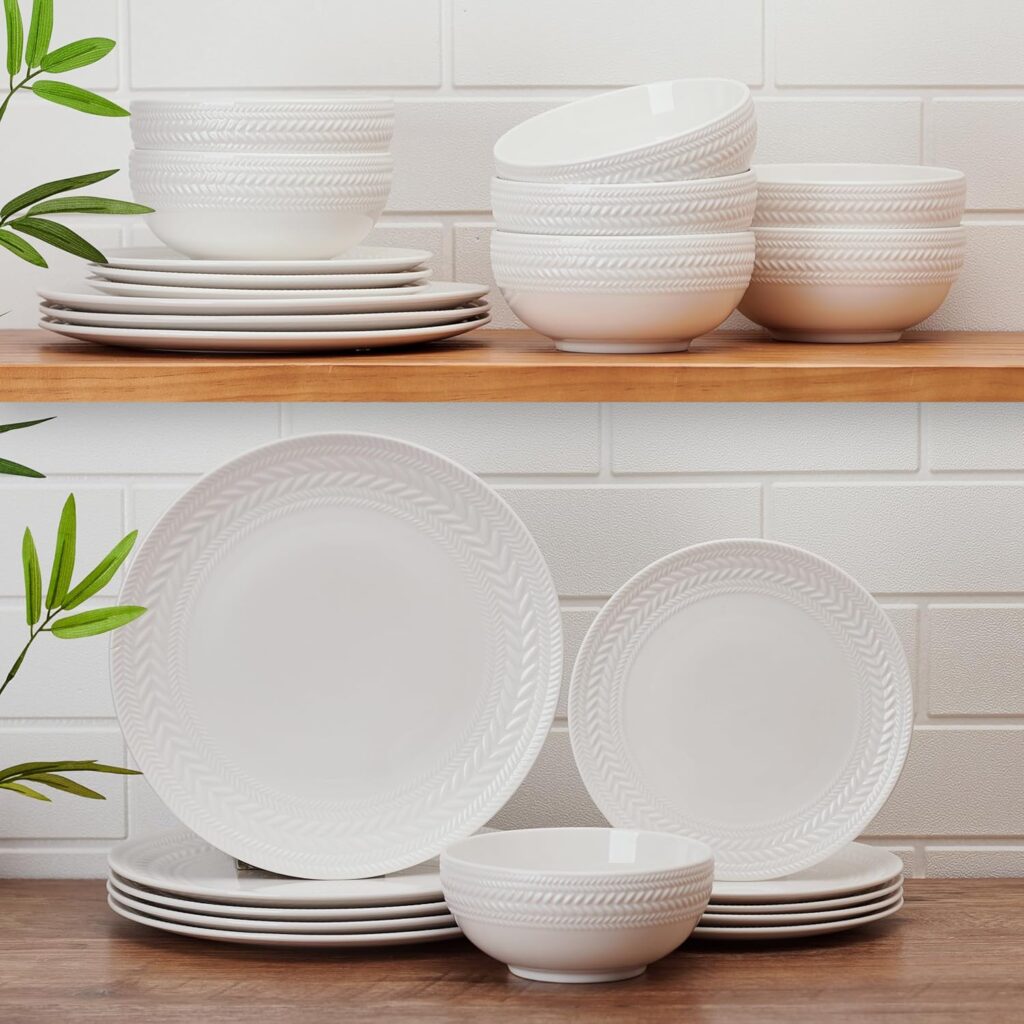
Throughout its long history, manufacturing practices and safety standards have evolved considerably.
Before the 1970s, lead was commonly used in ceramic glazes across the industry to create vibrant colours and enhance durability.
This wasn’t unique to Pfaltzgraff – it was standard practice for most ceramic manufacturers worldwide.
The turning point came in 1971 when the FDA established regulations limiting the amount of leachable lead allowed in ceramic tableware.
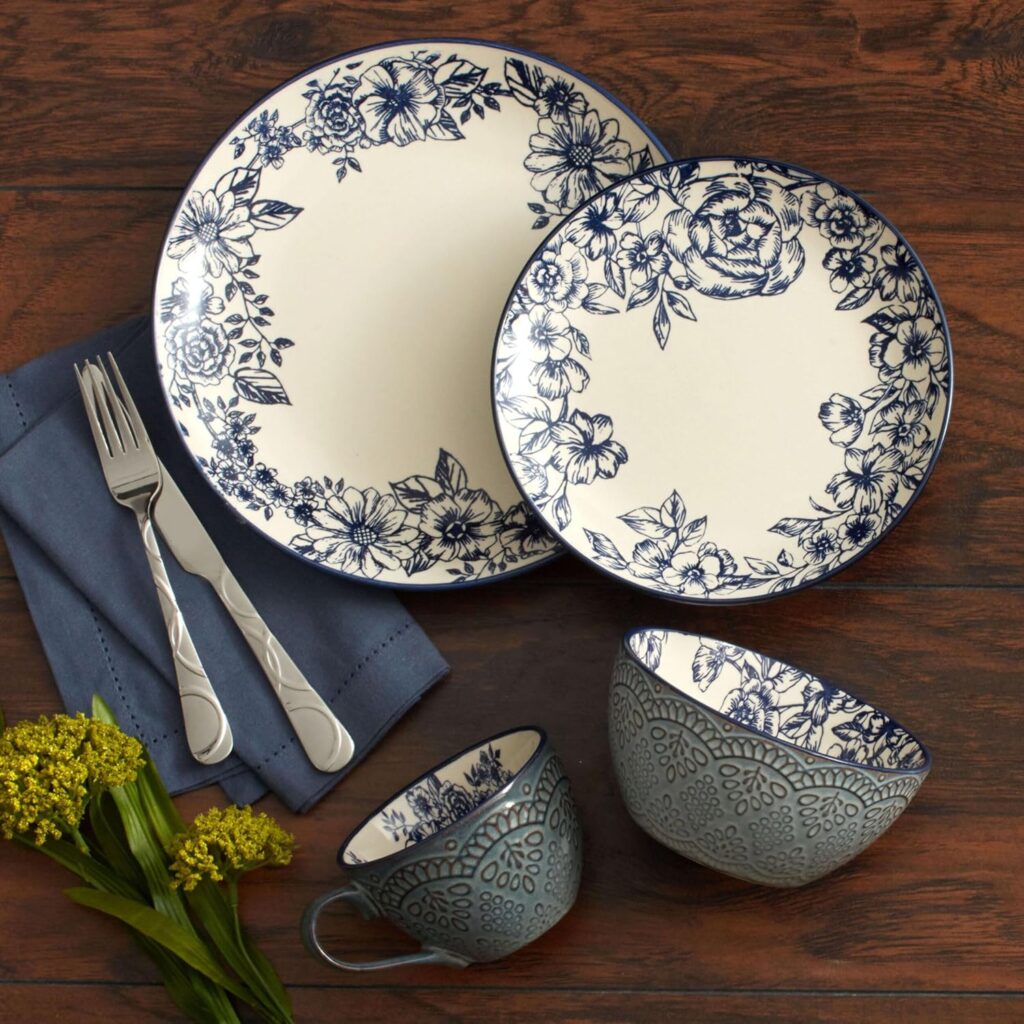
These regulations have been updated several times since, becoming increasingly stringent.
By the 1990s, most major manufacturers, including Pfaltzgraff, had significantly reduced or eliminated lead from their glazes.
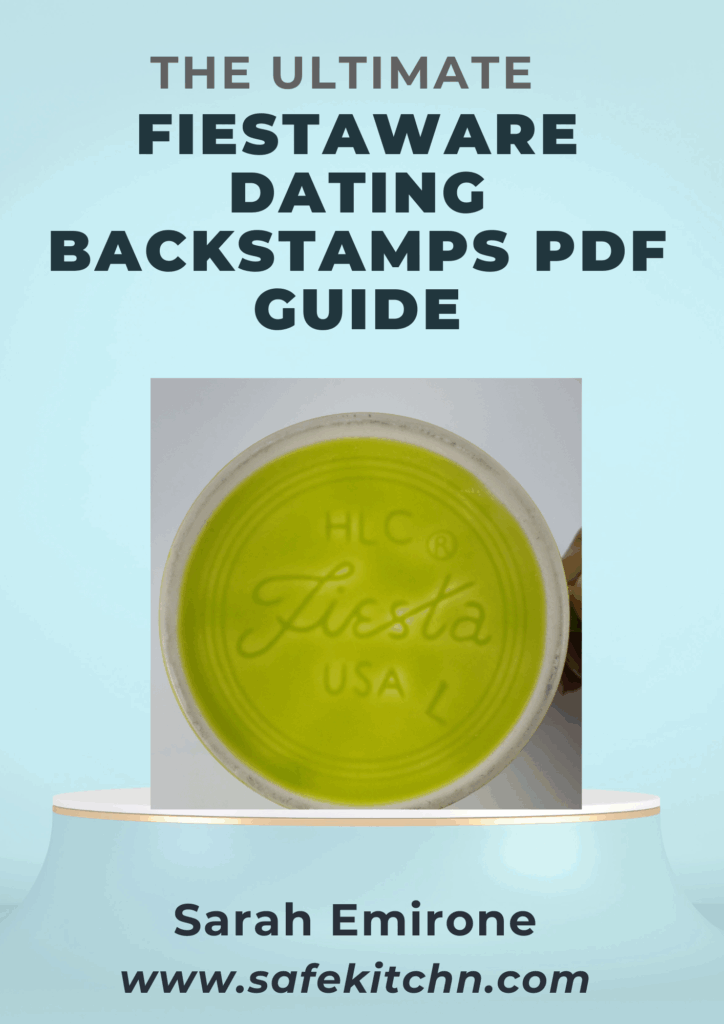
CURRENT LEAD STANDARDS FOR DINNERWARE
Today, strict regulations govern how much lead can be present in dinnerware:
| Regulatory Body | Leachable Lead Limit | Applies To |
| FDA (USA) | Varies by category: 3 ppm (flatware), 2 ppm (small hollowware), 1 ppm (large hollowware), 0.5 ppm (cups/mugs) | Dinnerware |
| California Prop 65 | Stricter limits: 0.10 ppm (hollowware/cups/mugs), 0.226 ppm (plates) | All ceramic ware sold in California |
| EU Standards | Varies by category: 0.8 mg/dm² 4 mg/L | Ceramic food contact materials |
Note: PPM stands for parts per million, which is a measurement of lead concentration.
DOES MODERN PFALTZGRAFF CONTAIN LEAD?
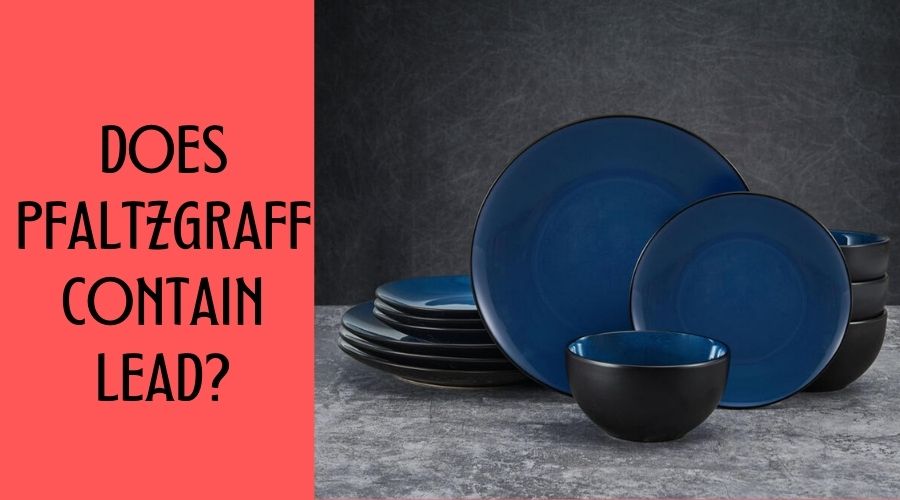
Modern Pfaltzgraff products are indeed designed to meet regulatory standards, specifically those set by the U.S. Food and Drug Administration (FDA) regarding lead content.
The company has stated that its current products comply with all applicable FDA regulations concerning lead levels in dinnerware and other food-related items.
The FDA does not permit lead to be used as a color or food additive in foodware, and it actively works to limit lead exposure from products intended for food use.
Manufacturers are legally required to ensure their products do not contain unsafe levels of lead, and the FDA can take regulatory action against those that do.
Pfaltzgraff asserts that all its products are tested by accredited, independent laboratories to ensure compliance with federal standards related to lead and other contaminants.
This claim aligns with the FDA’s guidelines, which emphasize that there are no safe levels of lead exposure for humans, particularly vulnerable populations such as children.
For example, it’s worth noting that “lead-free” in the ceramic industry often means the product contains no intentionally added lead, rather than being 100% free of any lead traces.
This distinction is important because minute traces of lead can sometimes be found in raw materials used in ceramics manufacturing.
Furthermore, Pfaltzgraff has faced scrutiny in the past. For instance, in 2008, some of its dinnerware was recalled due to concerns about high lead or cadmium levels. Despite this history, the company has made efforts to ensure that its current offerings meet safety standards.
In summary, while Pfaltzgraff claims compliance with FDA regulations regarding lead content in its products, consumers should remain informed about potential risks associated with older or vintage items and verify the safety of specific products when necessary.
DOES PFALTZGRAFF WINTERBERRY CONTAIN LEAD?
Pfaltzgraff’s Winterberry collection is one of their most popular patterns, especially during the holiday season.
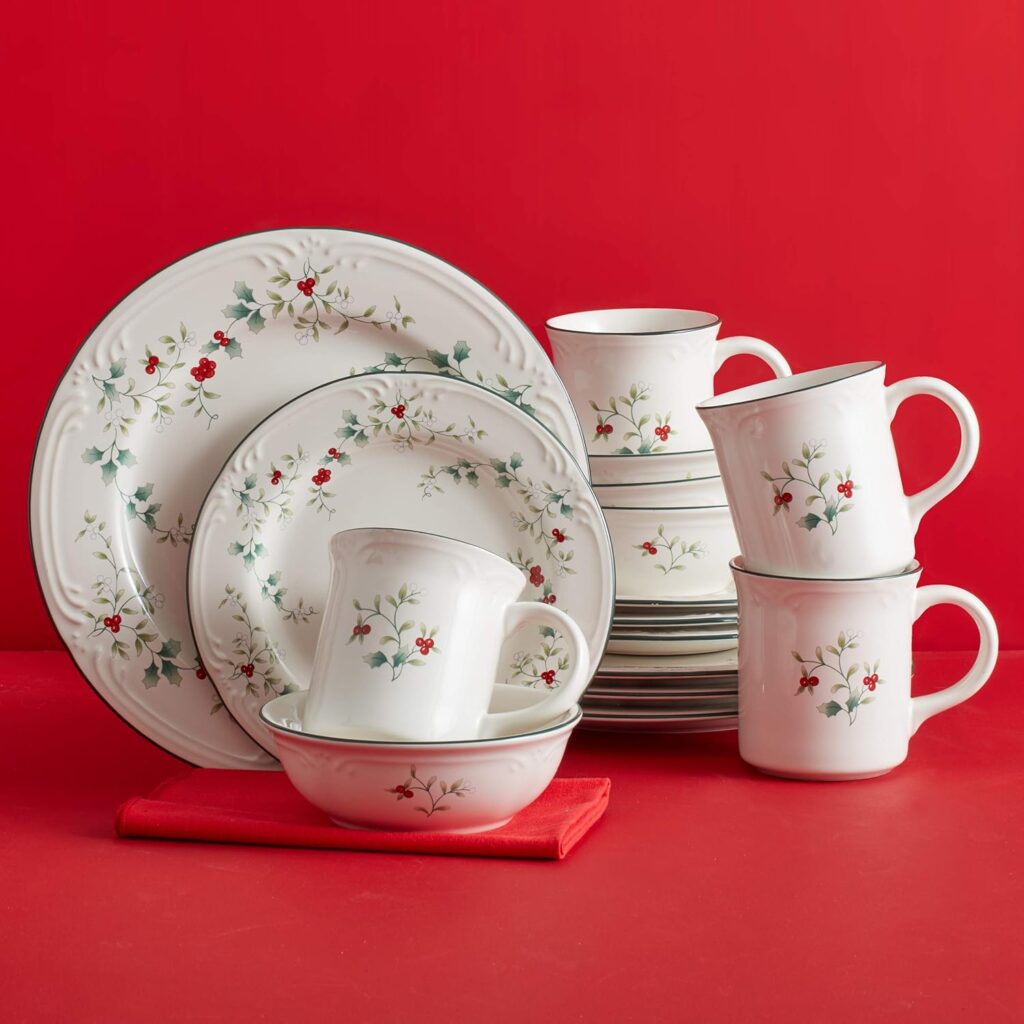
The Winterberry collection, like other modern Pfaltzgraff lines, is manufactured to meet current FDA standards.
This means that any lead content would be within regulated safe limits. The bright red berries that characterize this pattern use modern ceramic pigments that don’t rely on lead for their vibrant colour, unlike some older red glazes from decades past.
For those particularly concerned about the Winterberry pattern, it’s worth noting that this collection was introduced in 1991 and has been updated over time to comply with evolving safety standards.
Current production of Winterberry items uses modern manufacturing techniques and glazes that are designed to be safe for food contact.
DOES VINTAGE PFALTZGRAFF HAVE LEAD?
Older Pfaltzgraff pieces, especially those manufactured before the 1990s, have been found to contain higher levels of lead in their glazes or decorative elements compared to modern safety standards.
This is consistent with findings from XRF testing, which has detected lead levels exceeding safe thresholds in vintage Pfaltzgraff items from the 1980s and 1990s.
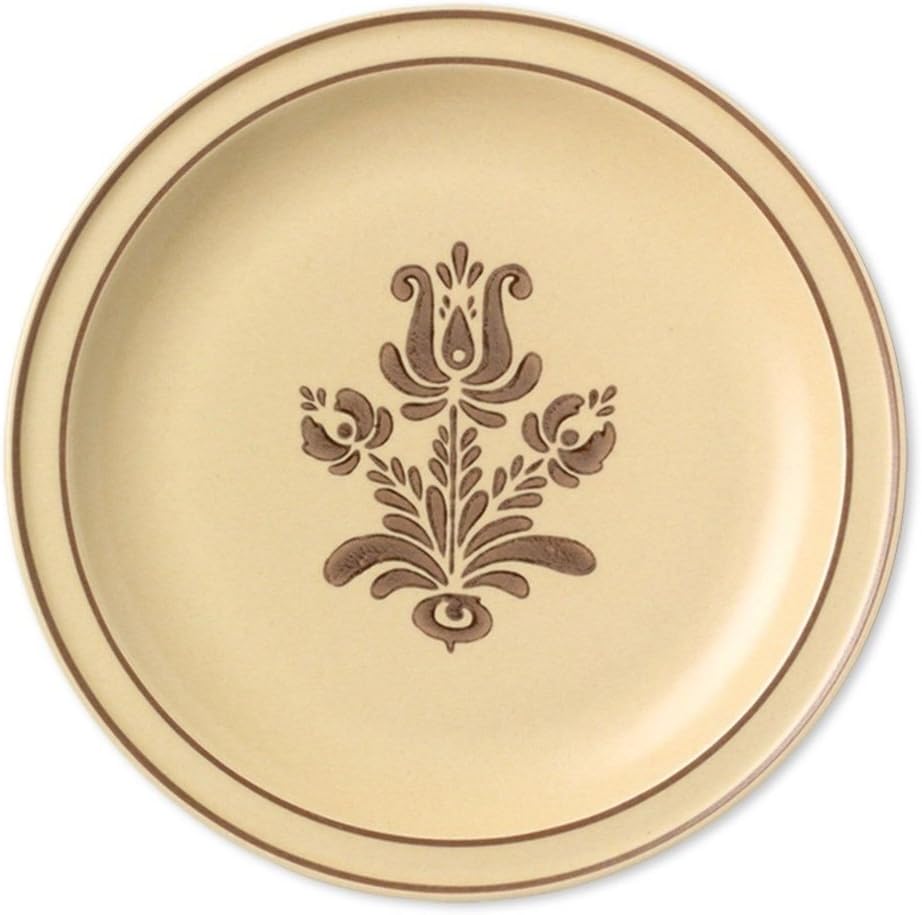
Such lead content was common in ceramic dinnerware from that era, not unique to Pfaltzgraff.
Vintage Pfaltzgraff patterns from the 1960s, 70s, and early 80s were likely produced using glazes containing lead, as this was standard practice before stricter regulations were implemented.
The lead content in these vintage pieces might exceed current safety standards, particularly if the glaze shows signs of wear, cracking, or crazing.
Some indicators that your vintage Pfaltzgraff might contain high levels of lead include:
- Manufacturing date before the mid-1980s
- Bright red, orange, or yellow decorations (these colours often require lead-based pigments)
- Visible crazing or cracking in the glaze
- High gloss or exceptionally bright colours
While many collectors cherish vintage Pfaltzgraff for decorative purposes, it’s advisable to use caution when using very old pieces for food service, especially for acidic foods that might accelerate lead leaching.
WHICH PFALTZGRAFF PATTERNS CONTAIN LEAD?
If you’re wondering which Pfaltzgraff patterns contain lead, here’s a general guide based on manufacturing eras:
Patterns More Likely to Contain Lead:
Patterns produced before the 1990s may contain higher lead levels than modern standards permit. Some notable older collections include:
- Yorktowne (pre-1990s versions)
- Village
- Folk Art
- Heritage
- Early versions of Remembrance
Patterns Less Likely to Contain Lead:
Patterns produced after the late 1990s typically comply with modern lead safety standards:
- Contemporary Winterberry
- Everyday
- Patio Garden
- Tea Rose (modern versions)
- Naturewood (modern versions)
It’s important to note that Pfaltzgraff has produced hundreds of patterns over decades, and many patterns have been produced across different eras with different manufacturing standards.
The actual lead content would depend on when a specific piece was manufactured rather than just the pattern name.
If you own Pfaltzgraff onion soup bowls from vintage collections, these would follow the same guidelines as other items from their respective eras.
Modern versions should comply with current safety standards.
HOW TO TEST PFALTZGRAFF DISHES FOR LEAD
If you’re concerned about potential lead content in your Pfaltzgraff dinnerware, several options exist for testing:
Home Lead Test Kits
Swab tests like those made by 3M or Lead Check can provide a preliminary indication of lead presence.
These tests change colour when they detect lead on surfaces and are relatively inexpensive and easy to use. However, they have limitations:
- They typically only detect high levels of lead
- They test surface lead that might rub off, not necessarily lead that could leach into food
- False negatives are possible, especially with lower lead concentrations
Professional Laboratory Testing
For more accurate results, professional laboratory testing is recommended. Labs can perform X-ray fluorescence (XRF) testing or leach testing that simulates food acids to determine how much lead might transfer to food.
XRF Testing Services
Some communities offer XRF testing services through health departments or lead safety programs.
Some companies specialize in household testing and can come to your home and test your dinnerware.
Remember that testing should be done periodically on older items, as wear and tear can affect lead leaching over time.
IS PFALTZGRAFF STONEWARE MICROWAVE SAFE?
Yes, most Pfaltzgraff stoneware is microwave safe.
Key Points:
- Modern Pfaltzgraff stoneware (1970s-present) is generally designed to be microwave safe
- The backstamp on the bottom of each piece will indicate “MICROWAVE SAFE” if approved
- Popular patterns like Yorktowne, Tea Rose, Naturewood, and Winterberry are all microwave safe
Important Precautions:
✓ Always check the backstamp – look for the microwave-safe symbol or text
✓ Avoid pieces with metallic trim – gold or silver decorations are NOT microwave safe
✓ Vintage pieces from pre-1960s may not be microwave safe – use caution
✓ Don’t overheat – prolonged microwaving can cause any stoneware to become extremely hot
✓ Check for damage – cracked or chipped pieces should not be microwaved
Best Practices:
- Use moderate heating times
- Use pot holders when removing (stoneware retains heat well)
- Allow hot pieces to cool before washing with cold water (prevents thermal shock).
HOW TO SAFELY USE OLDER PFALTZGRAFF COLLECTIONS
If you own and love older Pfaltzgraff patterns but are concerned about potential lead content, here are some practical guidelines for safer use:
- Avoid using vintage pieces for serving or storing acidic foods (tomatoes, citrus, vinegar-based dressings)
- Don’t use older dishes in the microwave, as heat can accelerate lead leaching
- Consider using vintage pieces for decoration rather than everyday eating
- Wash older dishes by hand rather than in the dishwasher to prevent glaze deterioration
- Inspect pieces regularly for signs of wear, crazing, or scratches in the glaze
- Be especially cautious with pieces that have bright red, orange, or yellow decorations
- Don’t store food in vintage ceramic pieces for extended periods
These precautions are particularly important for households with children, pregnant women, or those with certain health conditions that might make them more vulnerable to the effects of lead exposure.
DOES PFALTZGRAFF CHIP EASILY?
The durability of Pfaltzgraff dinnerware can vary depending on the specific collection and era of manufacture.
Generally, Pfaltzgraff stoneware is known for its durability and resistance to chipping compared to more delicate ceramics like porcelain.
The brand built its reputation partly on creating sturdy, everyday dishes that could withstand regular use.
However, no ceramic product is entirely chip-proof. Factors affecting chip resistance include:
- Material composition: Different Pfaltzgraff lines use varying materials, from earthenware to stoneware, each with different durability profiles
- Glaze type: Some glazes provide better protection than others
- Manufacturing era: Production techniques have evolved, potentially affecting durability
- Usage patterns: Even durable dinnerware can chip if subjected to impacts or improper handling
Modern Pfaltzgraff collections typically feature improved durability compared to vintage pieces, partly due to advances in manufacturing technology.
Many current lines, like the Pfaltzgraff Silverware are specifically designed to withstand the rigours of everyday use, including dishwasher cleaning.
DOES PFALTZGRAFF SCRATCH?
Another common concern is Does Pfaltzgraff scratch? Like chipping, scratch resistance varies across different Pfaltzgraff collections and manufacturing eras.
Pfaltzgraff stoneware generally offers good scratch resistance due to its hard glaze finish. However, it’s not impervious to scratching, especially when:
- Metal utensils are used aggressively on the surface
- Pieces are stacked without protective materials between them
- Abrasive cleaning tools or harsh scouring pads are used
- Pieces are subjected to cutting directly on the surface
To minimize scratching on your Pfaltzgraff dinnerware:
- Use wooden, silicone, or plastic utensils when possible
- Avoid cutting directly on plates
- Use non-abrasive cleaning materials
- Place protective materials between stacked dishes during storage
- Hand washing, particularly cherished or delicate pieces
Modern Pfaltzgraff pieces typically feature improved scratch resistance compared to vintage items.
CARE AND MAINTENANCE OF PFALTZGRAFF DINNERWARE
Proper care can extend the life of your Pfaltzgraff collection and reduce potential concerns about lead or other issues:
Dishwasher Safety
Many modern Pfaltzgraff collections are dishwasher-safe. However, you may be wondering if Pfaltzgraff dishes are oven-safe. We have answered in another guide.
Hand Washing Recommendations
For vintage pieces or especially cherished items:
- Use mild dish soap
- Avoid abrasive scouring pads
- Dry thoroughly before storing
- Don’t soak for extended periods
Storage Suggestions
- Place protective materials between stacked dishes
- Store in a stable environment away from extreme temperature changes
- Display pieces vertically, when possible, to reduce stress on edges
Signs It’s Time to Retire Pieces from Food Use
Consider using pieces for decoration only if you notice:
- Crazing (fine cracks in the glaze)
- Chips that expose the clay body
- Worn decoration, especially on eating surfaces
- Very old pieces (pre-1980s) with bright colours.
ALTERNATIVES FOR THOSE CONCERNED ABOUT LEAD
If you’re particularly concerned about potential lead exposure, several alternatives exist:
Lead-Free Dinnerware Options
- Clear glass (like Pyrex, Anchor Hocking)
- Plain white ceramics from brands that certify lead-free status
- Stainless steel
- Bamboo or other natural materials
- Certified lead-free ceramic brands like the Mora Ceramic Brand (many now prominently advertise this status)
When to Consider Replacing Older Pieces
While it can be emotionally difficult to part with inherited or collected pieces, consider replacing items for daily use if:
- They show signs of wear, especially in food contact surfaces
- They were manufactured before the more stringent lead regulations
- You’re serving vulnerable populations like children or pregnant women
- You’ve had them tested, and they show concerning lead levels.
CONCLUSION
When it comes to the question “Does Pfaltzgraff contain lead?” the answer largely depends on when your pieces were manufactured.
Modern Pfaltzgraff dinnerware is designed to meet current safety standards, while vintage pieces may contain higher levels of lead typical of their era.
By understanding potential risks, testing options, and proper usage guidelines, you can make informed decisions about your beloved Pfaltzgraff collection.
Whether you’re admiring the timeless beauty of Winterberry or cherishing heritage patterns passed down through generations, balancing appreciation for these ceramics with appropriate safety measures ensures you can enjoy your Pfaltzgraff dishes for years to come.
For specific concerns about your collection, consider professional testing and always prioritize safety when it comes to items used for food service.
Citations:
- FDA Regulations on Leachable Lead Limit in Flatware
- California 65 lead regulation
- EU Regulations on Ceramic Dinnerware.